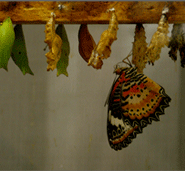To make a statue, in all its likeness to the human and animal kingdom, is to set life in stone. When Ismael Sanz-Pena, an animation artist from Spain, traveled to the far reaches of the globe, he sought to find kinesis in stasis, to find the present in history. His sequence of images are 30 or so seconds of pure pleasure: the ancient and the antique are made to dance like there is no tomorrow. Compiled at The Louvre in Paris and The National Museum in Delhi, respectively, they elicit surprise, then laughter, and much later, an eerie sense of the absurd universe of nature and man's imperative to mimic it, as art.
In this Musical Mixtape, we imagine what these sculptures might be dancing to, picking up cues from Ismael's statement that "The museums were great places to take photographs because they provide a limited environment". And thus have we selected two limited musical genres, relevant to present day Paris and Delhi. The differences are subtle, and we urge you to delve in each piece with a unique ear.
1. Begin with the animations in their original form, in silence, but listen still, for they are not mute.
Le Persistence of Vision at The Louvre with the improvisatory, melancholic movement of Surrealism, featuring two famous musicians from 20th Century Paris, and onto The Persistence of Vision II at The National Museum in Delhi, which beats to the contemporary electronic thump of the city of Delhi:
2. Django Reinhardt, a Romani maker of gypsy swing was never tutored, and worked from instinct, creating patterns that are now considered jazz standards. Django literally means "I awake", much like the statues that gain consciousness with the repetition and rising speed of every note.
3. Edith Piaf lends lyrics to the lens, as if the deities themselves were calling out to the Mademoisele de Paris.
4. Tabla Beat Science, a band founded by Zakir Hussain that utilizes tablas and turntables alike, turns the grunge up, it makes us want to move like pixels, dance the robot dance, like a line of poetry enjambed.
5. And a special: if that sync required too great a leap of imagination, then emerging composer, Middle C, busts out beats specially harmonized to the goddesses' moves.
When we travel, we are struck by how worlds can be so apart, and yet be held together by the same forces. But, sometimes, we are filled with the kind of wonder that we have not previously met with: the wonder that enters us when we realize, my god, how we own this place, and look at us dance!
Himali Singh Soin is a writer who likes gluing things together.
Ismael Sanz-Pena uses stop-motion, pixilation, mixed-media, rotoscope and drawing to reveal the bathos of making the non-living lifelike. He has shown at the National Gallery, London, the Annecy Film Festival and the Questors Theatre, amongst others.
Django Reinhardt (1910 -1953) created a form of gypsy jazz in Paris that caravaned the whole world since.
Edith Piaf (1915 - 1963) sang French ballads that evoked the pathos and the dance of her own life from the streets to the soirees of Paris.
Tabla Beat Science was started by Zakir Hussain and Bill Laswell in 1999. The members comprise of Ustad Sultan Khan, Karsh Kale, Talvin Singh, Trilok Gurtu, and DJ Disk.
Middle C aka Sahil Vasudeva is a composer and classical pianist living and working in Delhi.
Editor's Note.
You're born, gurgling and pink, bright white light in your eyes for the first time. Beyond the blinds are trees, moving in the wind, lime green and lush. And there's a sky--it rained as you entered--that is spotless except for a mustache of cloud in the corner. You grow up with nature, a kind of raw material for habit. When you move, you act, you transform from one state to another, creating. You create by walking, by waking up and going to sleep. You make, from nature, art.
Read More
By Himali Singh Soin, Issue 23, Wonder: Between Nature and Art.
Also in this issue
Illusion: Seeing Beyond Seeing
Meaning: In Search of Significance.
Melody: A Different Tune
Rhythm: Ordering Time







